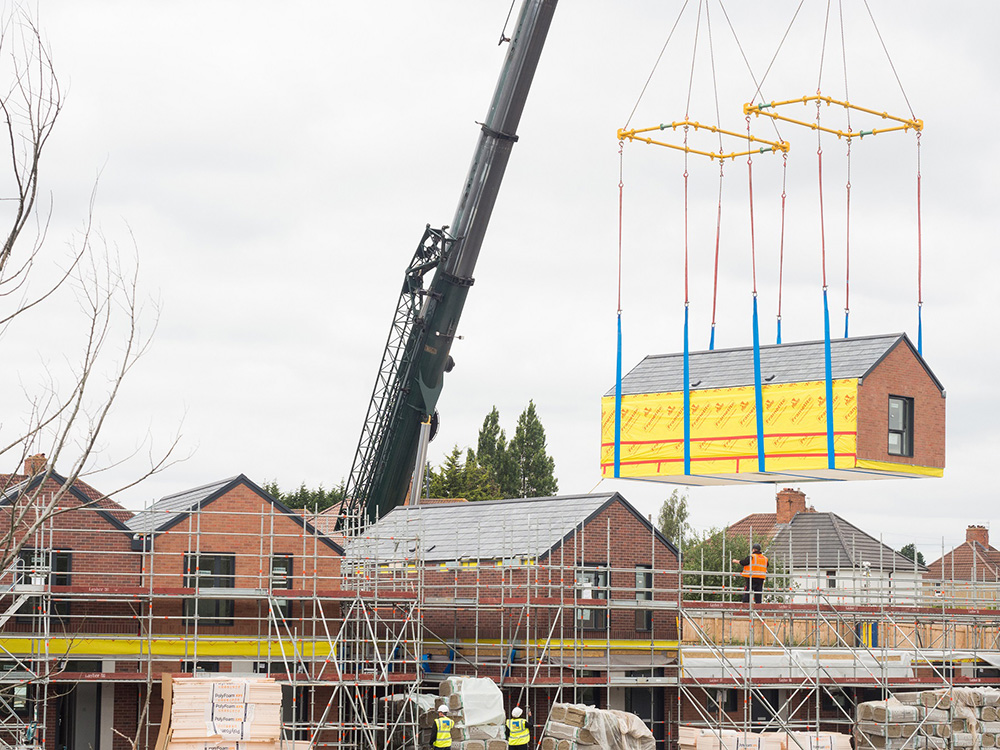
Trina Chakravarti provides some practical tips on how social landlords can involve traditional SME builders in their offsite construction #UKhousing
Procurement for Housing and Building Better have signed up Ilke Homes, Impact Modular and TopHat to the volumetric framework which is worth up to £600m over five years. Social housing providers will be able to procure pre-manufactured 3D construction systems for both houses and apartments through the deal.
When social landlords want to build new homes, their options are often presented as binary. They can go down the tried and tested route of traditional construction methods or try something different and opt for offsite delivery.
In board rooms, on conference stages and in the media, modern methods of construction (MMC) are regularly pitted against bricks and mortar. They are seen as rival industries, competing to build the highest quality, most sustainable, least costly social homes.
But what if manufacturers and contractors put their differences aside and found a way to work together? With social housing organisations facing immense pressure to construct new homes at a time of significant economic volatility, a complementary approach might be one way to steady development pipelines.
And that stability is badly needed. In the year to March 2022, 360 British house builders went bust (many of them SMEs) – up 75% on 2020-21. Soaring energy, labour and materials costs, a slow and restrictive planning system and notoriously low profit margins are crippling smaller, traditional contractors and this is impacting our sector’s ability to develop new homes.
In parallel with this, the MMC market is expanding. However, many manufacturers want only to supply products rather than taking the lead contractor role. This presents a problem for social landlords: they must bridge this ‘offsite gap’ and find a way to control the building process without adding additional risk and cost.
Could the answer be greater collaboration between traditional and MMC? It feels like there is a growing appetite for a more co-operative approach. Through my work with the National Housing Federation-backed alliance Building Better, I regularly speak to housing providers looking to build homes in factories. An increasing number tell me they want to use traditional SME contractors on MMC projects, but they don’t know how.
Such SMEs are highly skilled, local building firms that social landlords have nurtured relationships with over many years. Landlords want to maintain those trusted community connections and continue investing in local jobs and businesses, offering a visible pipeline to these companies but in the offsite space.
So, involving traditional SMEs in offsite could be a positive move for all parties – but it must be done right. Here are some practical tips.
Rethink the lead contractor approach
Housing providers are used to appointing traditional house builders as principal contractors. One firm takes on the risk of the entire build and manages each aspect, from the design and technical specifications to labour, materials, drainage and roads. Groundworks to brickworks, roofing to cleaning – the principal contractor owns it all.
But that same one-stop shop model isn’t provided by all offsite manufacturers. Many – particularly those producing two-dimensional, panellised systems – do manufacturing only.
One way around this is to rethink the contracting model. Rather than replicating the traditional construction method of giving all contractual risk to a single player, a collaborative approach might be more effective for MMC. This would see risk shared between key parties such as groundworks, infrastructure and other central sub-contractors. However, this risk-sharing will only work if an appropriate contractual arrangement is established.
Nurture local MMC supply chains
Interestingly, one reason that manufacturers don’t always offer a ‘turnkey’ approach is that they lack established relationships with the full supply chain. Many tell me how hard it is to find groundworkers, for example. Housing organisations, their local networks and groups can support here, sharing knowledge of reputable, regional sub-contractors so that manufacturers can strengthen their supplier relationships.
Take principal contractor role in-house
Some housing organisations such as Abri have an internal construction team that takes on the principal contractor role for schemes. Manufacturers and other contractors are then appointed by this in-house contractor function. This method provides a stepping stone to MMC – enabling a housing provider to take the leap in a managed way, retaining control of land, design, health and safety, and sub-contractors.
Upskill existing contractors
With construction controlled in-house, it is easier to engage and select suppliers you trust and wish to work with. These ‘subbies’ can be called on to deliver various roles in MMC schemes such as drainage, dry lining, road adaptions or components. Involving traditional SMEs in this way will diversify their skills base, building future MMC capacity and providing much-needed value to local supply chains.
As our sector transitions from traditional construction to manufacturing methods, social landlords must consider how they shore up their development plans while continuing as engines of local economic growth. Searching for synergy and balance between these two very different building methods might just be the way forward.
This article was first published in Inside Housing 4 January 2023